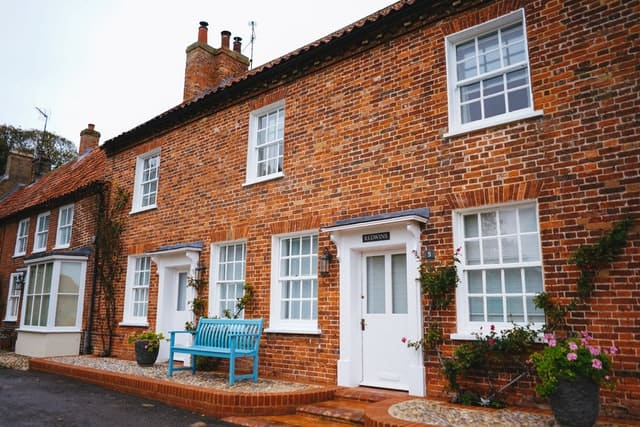
How to damp proof a house
How to Damp Proof an Older House
Due to the wet climate that we get in the UK, damp is often a common issue faced by British homeowners. However, problems that are caused by excess moisture in the home can lead to some serious structural problems. Older homes are often at a higher risk of developing damp issues since they were not typically built with the same damp-proofing measures as the newer homes are today. If you are looking at purchasing or already own an older property, it’s important to be prepared for the possibility of dealing with damp issues.
Damp Proofing an Older Home – Common Causes of Damp:
Many of the damp problems found in older UK homes are due to condensation and rain penetration. However, there are various problems that often lead to damp in older properties and understanding the potential cause of the problem is the first step towards successfully damp-proofing your home. Some of the most common reasons for damp are:
Leaking Gutters:
Penetrating damp occurs when water makes its way from the exterior and into the interior walls of the home. One of the biggest causes for this is problems with the gutters, which can often be seen in older homes. If your older home still has the same gutters that were installed decades ago, chances are that they are no longer effective for the amount of rainfall that we are getting today. Gutters are designed to direct rainwater away, rather than towards your home – but if they’re not working effectively or have sustained damage, the water will be directed towards and often into your home instead.
Bridged or Broken Damp Proof Course:
The damp proof course is designed to prevent water from entering your foundations. However, when the damp proof course is no longer working effectively, or has been bridged, which occurs when structures provide a ‘bridge’ that the moisture can get over or around, this can lead to rising damp in the home. Rising damp is often the easiest to spot since it occurs on the lower level of the property just above the skirting boards. However, it is often one of the trickiest to fix, and it’s worth having a damp proofing specialist come and inspect your damp proof course to determine the cause of the problem.
Plumbing Leaks:
Leaks in the plumbing can also lead to damp problems in the home. If you’ve noticed localised patches of damp that tend to be quite close to bathroom features or water-based appliances in your home, there’s a high chance that a leak could be behind the issue. Since internal leaks are not always obvious, a leak detection service could be a useful way to find out more about the pipes that are affected, giving you the opportunity to deal with the issue before it gets any worse. Pipe insulation is one of the best ways to prevent damp that is caused by plumbing leaks since it will keep the pipes at a warmer temperature and reduce the risk of them freezing and cracking in colder weather.
Damp Proofing Old Houses – Dealing With Condensation:
Ventilation in older houses is not often the best, and as a result, a lot of damp can occur due to condensation. Condensation occurs when the warm air that we generate from everyday living activities comes into contact with the cooler surfaces of the walls and ceilings. Here it condensates to moisture, which can create damp patches on the walls. Using a dehumidifier, extractor fans, opening windows or installing a ventilation system is key to avoiding this issue.
Damp Proofing in a Terraced House – Solving the Issue:
Since many older houses in the UK are terraced houses, damp issues can often be prevalent in this type of property. The first step to dealing with the issue is to determine the type of damp that you are dealing with in your terraced home. Penetrating damp can often be resolved by paying more attention to home maintenance, particularly when it comes to any cracks or gaps from the exterior to the interior of your home. Replacing any broken gutters may also be necessary to prevent penetrating damp. On the other hand, a rising damp issue in your home will require you to have the damp proof course professionally checked. A specialist will be able to help you determine if the damp proof course will need to be completely replaced or whether it can be repaired, for example, by removing something that has caused it to become bridged. If condensation is the main cause of damp issues in your home, a dehumidifier or improving your ventilation system can help.
What is the Damp Proofing House Cost?
How much you can expect to pay for damp proofing your home will depend on a number of factors including the type of damp that you are dealing with or at the most risk of, where the damp has occurred, and how much damage the damp has caused in your home so far. Penetrating damp is often cheaper to deal with compared to rising damp, while condensation damp could be very cheap to deal with since it can often be prevented by simply improving the ventilation in your home.
Damp Proofing Old Houses – Should I Get a Damp Inspection?
If you are dealing with damp issues in your home, the smell is often one of the first things that you’ll notice. If you notice a musty and distinctive smell, chances are that there’s a damp issue somewhere in your property. Most types of damp are also usually easy to identify with a visual inspection of the area since they will show up as moist patches on the wall and can often lead to mould, which shows up as dark stains. Many damp patches will look yellow or brown, and any wallpaper or paint in the area might be cracked or crinkled. While it’s possible to identify damp on your own, it’s worth working with a damp specialist in an older home since they can help to figure out the root cause of the damp, which may not always be obvious. In addition, they can help you determine any other areas of the home that might be at higher risk of damp in the future, allowing you to carry out preventative work before it becomes a problem.
How to Damp Proof a Stone House:
Many old buildings in the UK have stone walls, which can sometimes be harder to damp proof compared to more modern brick cavity walls. However, there are several things that you can do to damp proof a stone wall in your home, including chemical damp proofing treatments that will be applied by a professional. Bear in mind that penetrating damp can be one of the main issues that a stone wall will have, so it’s important to take the time to inspect the wall for anywhere that moisture could be getting through from the outside, and make sure that your gutters are in good repair and working effectively.
Damp Proofing Internal Walls:
Once you have dealt with the root cause of the damp in your home, you will then be able to deal with the effects of the damp inside. While it can be tempting to simply paint or wallpaper over damp and try and forget it was ever there, the truth is that if the root cause has not been dealt with, most damp problems will continue returning, costing you a lot of money and using up a lot of your time. When you’re sure that the issue causing the damp has been dealt with, you can treat the walls using damp undercoats and other treatments to harden the wall and restore its condition after suffering from damp issues. Depending on the extent of the damage, it might be necessary to strip wallpaper that has been affected and even replaster the walls. In rooms that are likely to be at a higher risk of damp such as the kitchen or bedroom, using a moisture-resistant paint for decorating can be helpful.
Damp-Related Health Issues in Older Homes:
Living in an older home can often mean that you are at a higher risk of health problems that are a direct result of damp. Not only can damp issues smell and look bad, but they can also affect your health in a number of ways, particularly when it comes to respiratory complaints. Damp is linked to several respiratory conditions including asthma and will often worsen the condition in people who already have this health problem. People who are exposed to damp in their homes regularly also have a higher risk of developing certain allergies and respiratory infections, and it can have a negative effect on your immune system. This is just one of the reasons why it’s important to spot and treat damp in the early stages and damp proof your older home to prevent further problems in the future.
Older homes are often at the highest risk of developing damp issues, but the good news is that damp proofing your older home is certainly possible with several options to consider.

